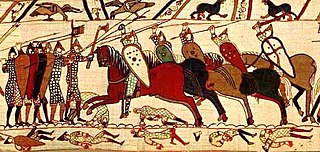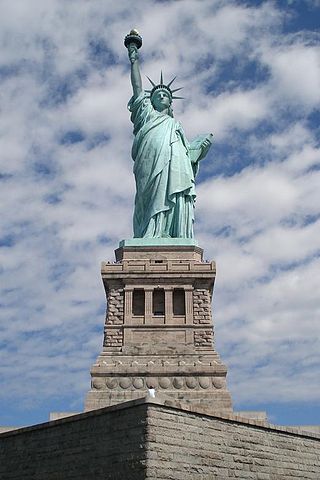October
tenth month in the Julian and Gregorian calendars From Wikipedia, the free encyclopedia
Remove ads
October (Oct.) is the tenth month of the year in the Gregorian calendar, coming between September and November. It has 31 days. The name comes from the Latin octo for "eight". It was the eighth month of the year before January and February were added to the beginning of the year.
| << | October | >> | ||||
| Su | Mo | Tu | We | Th | Fr | Sa |
| 1 | 2 | 3 | 4 | |||
| 5 | 6 | 7 | 8 | 9 | 10 | 11 |
| 12 | 13 | 14 | 15 | 16 | 17 | 18 |
| 19 | 20 | 21 | 22 | 23 | 24 | 25 |
| 26 | 27 | 28 | 29 | 30 | 31 | |
October begins on the same day of the week as January in common years, but does not begin on the same day of the week as any other month in leap years. October always ends on the same day of the week as February, and additionally, January in common years.
Remove ads
The Month

October is the tenth month of the year in the Gregorian calendar, coming after September and before November. It has 31 days. Its name comes from Latin octo, meaning eight, as it was the eighth month of the year in the Old Roman Calendar before January and February were added to the beginning of the year, though its name did not change. The tenth month at the time was December.
October is an Autumn (Fall) month in the Northern Hemisphere and a Spring month in the Southern Hemisphere. In each Hemisphere, it is the seasonal equivalent of April in the other.
October begins on the same day of the week as January in common years, but no other month in confusion years and leap years begins on the same day of the week as October. October ends on the same day of the week as January in common years and February every year, as each other's last days are 39 weeks (273 days) and 35 weeks (245 days) apart respectively.
In common years, October starts on the same day of the week as May of the previous year, and in leap years, August of the previous year. In common years, October finishes on the same day of the week as May of the previous year, and in leap years, August and November of the previous year.
In years immediately before common years, October starts on the same day of the week as April and July of the following year, and in years immediately before leap years, September and December of the following year. In years immediately before common years, October finishes on the same day of the week as July of the following year, and in years immediately before leap years, April and December of the following year.
October is the month of the Rosary devotion.
October 31/November 1 is Samhain in old Pagan tradition. Several current observances at this time are believed to be related to it. They are: Halloween (October 31) in many western traditions, All Saints Day (November 1), All Souls Day (November 2), and the Day of the Dead (October 31 to November 2), which is celebrated in Mexico.
Remove ads
Holidays
Fixed Observances



- October 1 – National Day of the People's Republic of China
- October 1 – Independence Day (Nigeria)
- October 1 – National Day (Cyprus)
- October 1 – Independence Day (Tuvalu)
- October 1 – Independence Day (Palau)
- October 1 – International Day of Older Persons
- October 2 – Gandhi Jayanthi (India)
- October 2 – Guardian Angels Day
- October 2 – International Day of Non-Violence, birthday of Mahatma Gandhi
- October 2 – Independence Day (Guinea)
- October 3 – Unity Day (Germany)
- October 3 – Foundation Day (South Korea)
- October 4 – Saint Francis of Assisi (Roman Catholicism)
- October 4 – Independence Day (Lesotho)
- October 4 – World Animal Day
- October 5 – Republic Day (Portugal)
- October 5 – International World Teachers' Day
- October 6 – Armed Forces Day (Egypt)
- October 7 – Feast of Our Lady of the Rosary
- October 8 – Independence Day (Croatia)
- October 9 – Leif Erikson Day
- October 9 – Independence Day (Uganda)
- October 10 – National Day in the Republic of China (Taiwan)
- October 10 – Independence Day (Fiji)
- October 11 – National Coming Out Day (United States)
- October 12 – National Day of Spain
- October 12 – Independence Day (Equatorial Guinea)
- October 16 – World Food Day
- October 18 – Feast of Saint Luke the Evangelist
- October 18 – Alaska Day
- October 19 – Constitution Day (Niue)
- October 21 – Apple Day
- October 21 – Trafalgar Day (United Kingdom)
- October 23 – Remembrance of the Hungarian Revolution (Hungary)
- October 23 – Chulalongkorn Day (Thailand)
- October 24 – United Nations Day
- October 24 – Independence Day (Zambia)
- October 25 – Day of the Romanian Army
- October 25 – Day of the Basque Country
- October 25 – Constitution Day (Lithuania)
- October 25 – Republic Day (Kazakhstan)
- October 26 – National Day of Austria
- October 27 – Independence Day (Saint Vincent and the Grenadines)
- October 27 – Independence Day (Turkmenistan)
- October 29 – Republic Day (Turkey)
- October 31 – Nevada Day
- October 31 – Protestant Reformation Day
- October 31 – Halloween
- October 31/November 1 – Samhain (an approximate date)
- October 31 to November 2 – Day of the Dead (Mexico)
Moveable Events
- Jewish New Year, September/October
- Munich Oktoberfest, runs from mid-September until around October 3
- The Summer Paralympics have often taken place in this month.
- The Nobel Prize winners of the year are announced in October
- Northern Hemisphere: Harvest festivals take place around this time.
- Second Monday in October:
- Thanksgiving Day in Canada
- Health and Sports Day in Japan
- Columbus Day in the United States
- Divali (Hinduism), takes place in October or November
- Last Sunday in October: End of Daylight saving time in the EU; clocks are turned back one hour.
Remove ads
Selection of Historical Events





- October 1, 1890 – Yosemite National Park is created by United States Congress.
- October 1, 1946 – The Nuremberg Trials of leading Nazis ends.
- October 1, 1949 – The People's Republic of China is declared by Mao Zedong.
- October 1, 1960 – Nigeria becomes independent.
- October 1, 1961 – British and French Cameroon merge.
- October 1, 1978 – Tuvalu becomes independent.
- October 1, 1994 – Palau becomes independent from a UN Trusteeship, though remains dependent on US aid.
- October 2, 1958 – Guinea declares independence.
- October 3, 1932 – The Kingdom of Iraq is formed.
- October 3, 1990 – Germany is officially re-united.
- October 4, 1957 – The Soviet Union launches the Sputnik 1 probe into orbit.
- October 4, 1966 – Lesotho becomes independent.
- October 5, 1910 – Portugal becomes a Republic.
- October 6, 1860 – The Introduction of the so-called Section 377 of the British Indian penal code (Law) was enacted in British India respectively.
- October 6, 1973 – The Yom Kippur war begins as Egypt and Syria launch an attack on Israel.
- October 6, 1981 – President of Egypt Anwar Sadat is shot dead at a military parade.
- October 6, 1987 – Fiji becomes a Republic.
- October 7, 1949 – East Germany is founded.
- October 9, 1962 – Uganda becomes independent.
- October 10, 1780 – The Great Hurricane of 1780 kills 20,000 to 30,000 people in the Caribbean.
- October 10, 1928 – Chiang Kai-shek becomes leader of the Republic of China.
- October 10, 1970 – Fiji becomes independent.
- October 10, 2010 – The Netherlands Antilles are split up.
- October 12, 1492 – Christopher Columbus reaches the Caribbean.
- October 12, 1871 – The Introduction of the so-called Criminal Tribes Act was an enacted extension in British India respectively.
- October 12, 1968 – Equatorial Guinea becomes independent.
- October 12, 1999 – The population of the world is said to have officially reached six billion.
- October 13, 2010 – Successful rescue of 69 miners trapped underground near Copiapo, Chile.
- October 14, 1066 – The Battle of Hastings results in William the Conqueror taking over England.
- October 14, 1964 – Martin Luther King, Jr. wins the Nobel Peace Prize.
- October 14, 1981 – Hosni Mubarak becomes President of Egypt.
- October 14, 1991 – Aung San Suu Kyi wins the Nobel Peace Prize.
- October 15, 1917 – Dutch exotic dancer Mata Hari is executed for espionage in France.
- October 16, 1582 – Spain, Portugal, Italy and Poland switch from the Julian calendar to the Gregorian calendar.
- October 16, 1978 – Pope John Paul II becomes Pope, remaining in this position until 2005.
- October 17, 1989 – The Loma Prieta earthquake strikes the San Francisco Bay Area.
- October 18, 1867 – Alaska officially changes from Russian to US control.
- October 18, 1898 – The US takes control of Puerto Rico.
- October 18, 1989 – Leader of East Germany Erich Honecker resigns.
- October 20, 1973 – Sydney Opera House in Sydney, Australia, is officially opened.
- October 20, 2011 – 2011 Libyan civil war: Colonel Muammar al-Gaddafi is killed.
- October 21, 1805 – The naval Battle of Trafalgar ends in British victory, although Admiral Horatio Nelson is killed.
- October 22, 1962 – The Cuban Missile Crisis begins.
- October 23, 1956 – The Hungarian Uprising begins.
- October 24, 1945 – The UN is officially founded.
- October 24, 1964 – Zambia becomes independent.
- October 26, 1905 – Norway becomes independent from Sweden.
- October 26, 1955 – Austria declares 'Permanent Neutrality'.
- October 27, 1962 – The Cuban Missile Crisis ends.
- October 27, 1979 – Saint Vincent and the Grenadines becomes independent.
- October 27, 1991 – Turkmenistan becomes independent from the Soviet Union.
- October 28, 1886 – The Statue of Liberty is officially dedicated near New York City, as a gift to the United States from France.
- October 29, 1923 – The Republic of Turkey is officially declared by Mustafa Kemal Atatürk.
- October 29, 1929 – The Wall Street crash occurs, starting the Great Depression.
- October 29, 1998 – Hurricane Mitch causes much destruction in Central America.
- October 31, 1517 – Protestant Reformation: Martin Luther is believed to have nailed his 95 theses to Wittenberg Castle Church in Germany on this date.
- October 31, 1984 – Prime Minister of India Indira Gandhi is shot dead by two Sikh security guards. Riots against the Sikh population start soon after.
- October 31, 2011 – The population of the world is said to have officially reached seven billion on this date.
Remove ads
Trivia
- October has the 300th day of the year. October 27 in a common year, October 26 in a leap year.
- Because Daylight Saving Time ends in October in some Northern Hemisphere countries, it is sometimes seen as the "longest" month there.
- In a common year, October 31 falls on the same day of the week as February 28 while in a leap year, it falls on the same day of the week as February 29.
- October 1 is the only day in October to start within the third quarter of the calendar year.
- This month is tied with November as the months with the most births of US Presidents as of January 20, 2021: with six - Jimmy Carter (October 1), Rutherford B. Hayes (October 4), Chester A. Arthur (October 5), Dwight D. Eisenhower (October 14), Theodore Roosevelt (October 27) and John Adams (October 30).
- October's flower is the Calendula.
- One of October's birthstones is the opal. The meaning of the opal is hope. The other birthstone of October is the pink tourmaline.
- The astrological signs for October are Libra (September 22 to October 21) and Scorpio (October 22 to November 21).
Remove ads
References
Other websites
Wikiwand - on
Seamless Wikipedia browsing. On steroids.
Remove ads